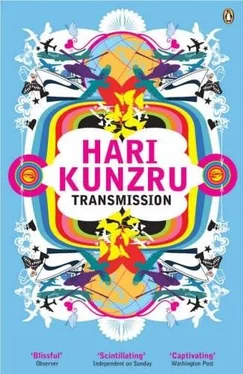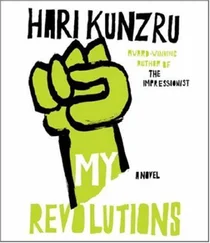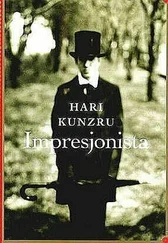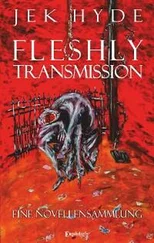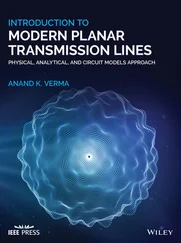The immigration officer smiled. ‘Of course, Mr Swift ,’ he said sarcastically. The policemen led him out of the room.
It was the man’s smug expression that made Guy panic. Certainty in a job well done, good riddance to bad rubbish. He started to scream that he needed a lawyer, was being kidnapped, had to get to an important meeting. A policeman winded him with a swift blow to the stomach, which stopped him struggling long enough to be handcuffed and thrown back into the wire-mesh pen. He shook the wire, shouting for help and banging the fence posts with the heel of his shoe in the vain hope that someone else in the room, some British police observer perhaps, would hear his accent and come to his rescue. He made so much trouble that he was taken across the tarmac on to the specially chartered plane with his hands and legs cuffed to a wheelchair. Tape was stuck over his mouth to stop him shouting, and a motorcycle helmet was shoved down over his head to prevent him biting his escorts or knocking himself out, both of which he had been seriously considering as options. At 2 p.m., when he was supposed to be sitting down with Director Becker and the other members of the PEBA public presentation working group, he was at 35,000 feet, flying deportation class en route to Tiranë, Albania.
How Guy Swift, young marketeer, British national and vocal speaker of English came to be identified as Gjergj Ruli, Albanian national, suspected pyramid fraudster and failed asylum seeker in Germany was one of the more bizarre stories to result from the infection of the Schengen Information System by what is now known as Variant Eight Leela, the so-called transpositional worm. The ‘shuffling’ action of Leela08 , which randomly reassociates database attributes, was responsible for the destruction of a huge number of EU immigration records before it was finally spotted and the system closed down some thirty-six hours after Guy Swift’s deportation. The same infection in machines hosting the Eurodac fingerprint database produced a number of false positives, identifying innocent people as known criminals, failed asylum seekers or persons being monitored by European intelligence services. Combinations of the two types of infection led (at a conservative estimate) to some thirty mistaken deportations. Since Operation Atomium relied almost entirely on two bullet-pointed strengths — [slide 1] the fast identification of deportation candidates through Eurodac and the SIS ; and [slide 2] special powers to accelerate processing of deportation candidates — it led to a situation in which (among other abuses) people were plucked from their homes at night and deposited in some of the world’s more troubled places without so much as a change of clothes, let alone money or a way of contacting home. Ukrainian brothers Pyotr and Yuri Kozak made contact with members of a Russian oil-exploration team who spotted them begging outside a bar in Port Harcourt, Nigeria. A Pakistani grandmother, 71-year-old Noor Begum, who had been visiting her family in Bradford, was repatriated from the Yemen via a religious charity.
Asked to describe Tiranë, Guy Swift just shakes his head. ‘I won’t talk about that place,’ he mutters. On his return, doctors described him as being ‘in poor physical condition’. The nature of the twenty-six days he spent in Tiranë can only be guessed at from the testimony of Albanians who saw a man fitting his description foraging for scraps behind restaurants in the city centre.
The only aspect of his time in Albania that Guy is prepared to discuss is the kindness shown to him by someone called Rudolph, a seventeen-year-old Liberian he met near the ferry dock at the port of Durrës. It was Rudolph who helped him sell his watch, which he had miraculously managed to keep safe, in return for a berth on one of the regular powerboat runs which took would-be Europeans to the Italian coast.
The boat was a small inflatable dinghy, carrying two crewmen and four other passengers, a Bangladeshi couple and their two children. The sea was choppy and visibility was poor. When the lights of a customs launch were spotted in the distance, the two traffickers immediately pitched all five of them into the sea. As Guy fell overboard, he remembers his absolute sense of certainty that he would drown. Asked what passed through his mind, he refuses to answer. It was, he says, ‘just luck’ that he swam in the right direction. He was washed ashore just before dawn on a tourist beach south of Bari. At first light he was found, semiconscious, muttering incoherently and clutching handfuls of European sand. He has, he says, no idea what happened to the Bangladeshis.
Guy Swift dominated the media for two or three days after his return. Arjun Mehta, the ‘evil scientist’ ( New York Post ) whose ‘twisted genius’ (London Evening Standard ) threatened the world with ‘techno meltdown’ (Sydney Daily Telegraph ), has rarely been out of the headlines since the last confirmed sighting of him at the Riverside Motel in San Ysidro. Despite an immense investment of police time and resources, Mehta, whose image is now one of the most widely circulated in the world, has never been apprehended. The FBI believes he is no longer alive, a position they recently reaffirmed despite the negative outcome of DNA matches performed on a corpse, thought to be his, dredged out of the LA river.
The San Ysidro Factory Outlet Center has become a favourite pilgrimage site for conspiracy theorists, who take notes and photographs, speak into dictaphones and measure distances with pocket ultrasonic devices. Like the Zapruder footage or the Watergate Tapes, the mall’s surveillance record of Arjun Mehta’s seemingly aimless amble from the Timberland Store to Starbucks has been pored over, debated and scrutinized for signs of tampering by the police and security services. As Leela researchers try to forge connections, reaching into ever-more recondite areas of speculation, the other people on the tapes, the ‘pony-tailed man’, the ‘loving couple’ and the slight figures of Kim Sun Hong and Jordan Lee have all been the subject of intense research. So far the results are inconclusive. As time passes and the volume of secondary material increases, the true meaning of the Leela occlusions is becoming, if anything, more obscure.
Attention has focused on the $8.99 yellow-rimmed ‘Freebird’ plastic sunglasses purchased by Mehta during the so-called ‘coffee-walk’. Their conspicuousness invites speculation that they were some kind of signal, a position reaffirmed (or according to other Mehtologists, refuted) by the ethnicity of the clerk. Sunglasses manufactured in South Korea. Bought from a clerk of Vietnamese origin. On various Leela websites a photograph of the Seoul plant where model 206-y was manufactured is presented as evidence. Beside the company name is the Cho-Sun Plastics logo: a dancing female figure.
From Mehta’s behaviour on the tapes, it appears he was unaware that he was being followed. As he walked into Starbucks, he was picked up by the in-store camera, which recorded him putting down his bag, conspicuously polishing his new Freebird model 206-y’s and fishing in his pocket for money. Some weeks after the coffee-walk a tape surfaced, purportedly made by a student sitting at a table near the cash register who was conducting an interview for a graduate history project. In the background of a conversation about the Little Landers, a Utopian agrarian community which existed in San Ysidro in the early years of the twentieth century, two voices can be heard. Spectrographic analysis has confirmed that they belong to Arjun Mehta and Ramona Luisa Velasquez, whose biography on the LeelaTruth site alleges that soon after the conversation she was fired, ostensibly for joining a union. It should be noted that even LeelaTruth’s floridly paranoid webmaster has failed to connect this to the main thrust of his Mehta-disappearance theory, which unites the Rosicrucians, CNN and the opening of the global pineal eye.
Читать дальше
